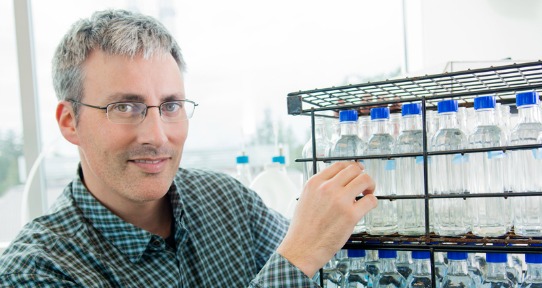Peak contamination levels from Fukushima off North America now known

Chemical oceanographer Jay Cullen leads the Fukushima inFORM project
For the first time since 2011, peak contamination levels in Pacific Canadian waters from Japan’s Fukushima Daiichi nuclear disaster are known, says a University of Victoria scientist who has been monitoring levels since the meltdown of three reactors at the plant.
Releases of radioactive elements from the Fukushima Daiichi Nuclear Power Plant accident in 2011 were the largest unplanned discharges of radioactivity into the ocean. The disaster, triggered by a 15-metre tsunami caused by a magnitude-9 earthquake, created widespread concern over the potential impact on marine life and human health.
“Contamination from Fukushima never reached a level where it was a significant threat to either marine or human life in our neighborhood of the North Pacific,” says UVic chemical oceanographer Jay Cullen.
Cullen leads Fukushima InFORM (Integrated Fukushima Ocean Radionuclide Monitoring), a network that monitors marine radioactivity at distances up to 1,500 kilometres off the coast of British Columbia.
Radioactive isotopes from Fukushima were first detected in June 2012, with maximum levels reaching offshore BC in 2015 and 2016.
“At their highest levels, contamination from Fukushima reached about one-tenth of what was seen in the North Pacific in the late 1950s and 1960s, before the ban of above-ground nuclear weapons tests,” says Cullen. “We are now seeing levels of Fukushima-related contamination similar to levels in the 1970’s and expect these to further decline in 2017-2018.”
The InFORM network brings together Canadian and US scientists, health experts and non-governmental organizations. Citizen scientists along the BC coast who are also part of the network assist with monthly collection of sea water samples and once a year collect fish and shellfish samples for analysis. The project is funded by the Marine Environmental Observation Prediction and Response Network.
More information can be found at fukushimainform.ca. The most recent findings were published in the American Chemical Society’s Environmental Science and Technology.
